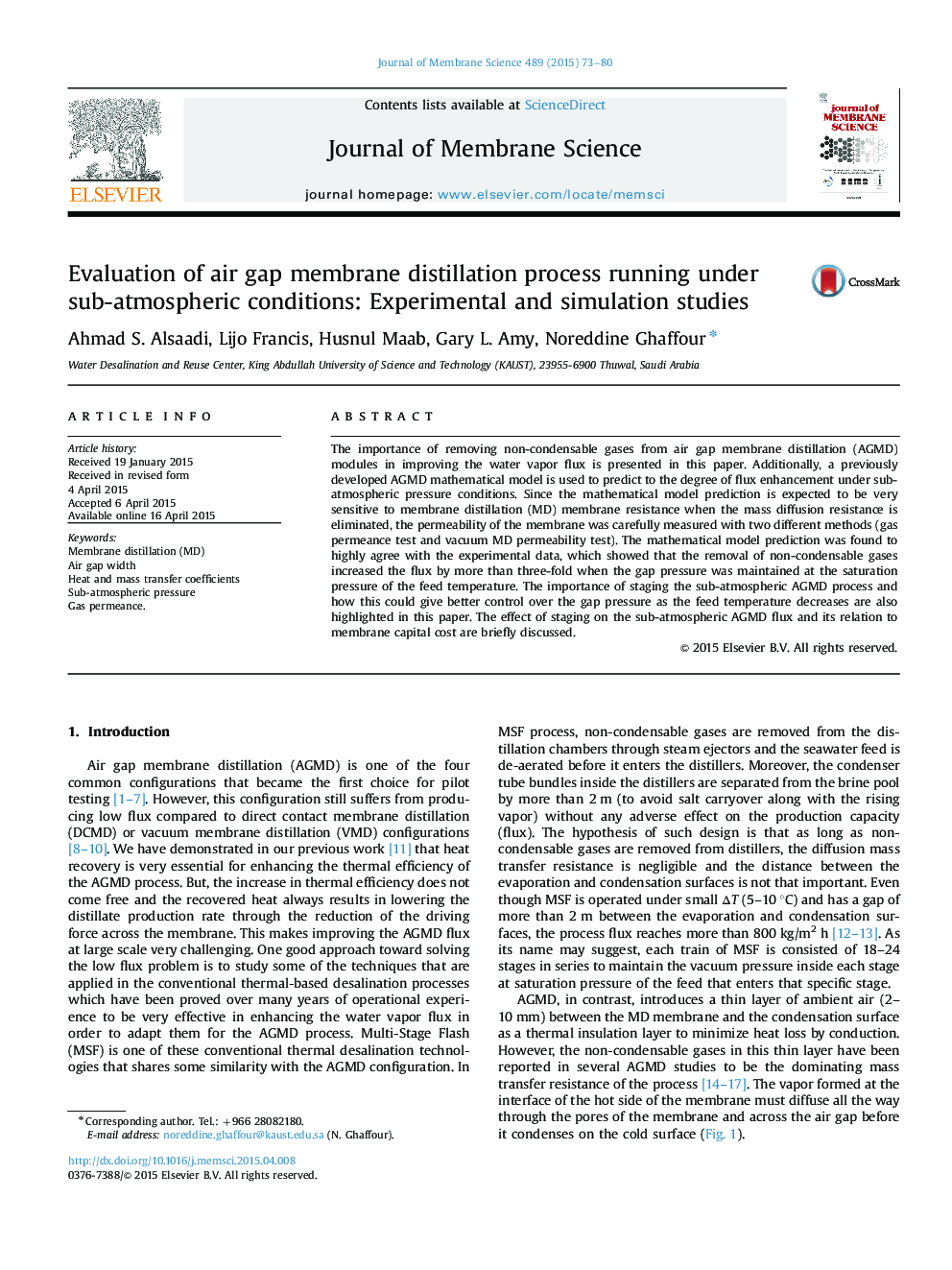| Article ID | Journal | Published Year | Pages | File Type |
|---|---|---|---|---|
| 632890 | Journal of Membrane Science | 2015 | 8 Pages |
•The effect of non-condensable gases on flux in sub-atmospheric AGMD is studied.•Removing non-condensable gases increased the flux by more than three-fold.•The gap width becomes less important at the absence of non-condensable gases.•The importance of staging the sub-atmospheric AGMD process is also highlighted.•The simulated predictions were found to be strongly correlated with the experimental data.
The importance of removing non-condensable gases from air gap membrane distillation (AGMD) modules in improving the water vapor flux is presented in this paper. Additionally, a previously developed AGMD mathematical model is used to predict to the degree of flux enhancement under sub-atmospheric pressure conditions. Since the mathematical model prediction is expected to be very sensitive to membrane distillation (MD) membrane resistance when the mass diffusion resistance is eliminated, the permeability of the membrane was carefully measured with two different methods (gas permeance test and vacuum MD permeability test). The mathematical model prediction was found to highly agree with the experimental data, which showed that the removal of non-condensable gases increased the flux by more than three-fold when the gap pressure was maintained at the saturation pressure of the feed temperature. The importance of staging the sub-atmospheric AGMD process and how this could give better control over the gap pressure as the feed temperature decreases are also highlighted in this paper. The effect of staging on the sub-atmospheric AGMD flux and its relation to membrane capital cost are briefly discussed.
